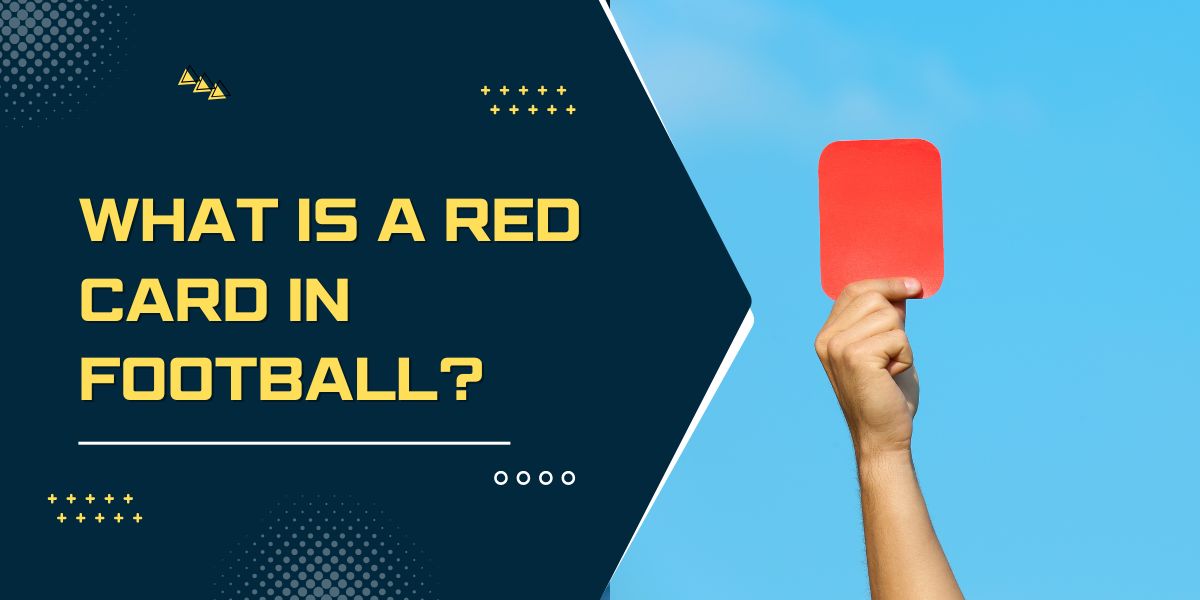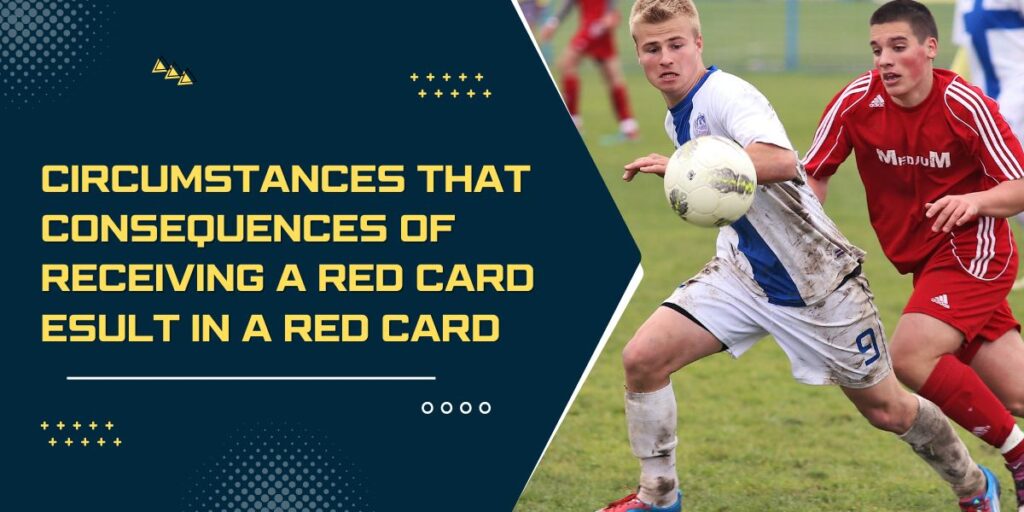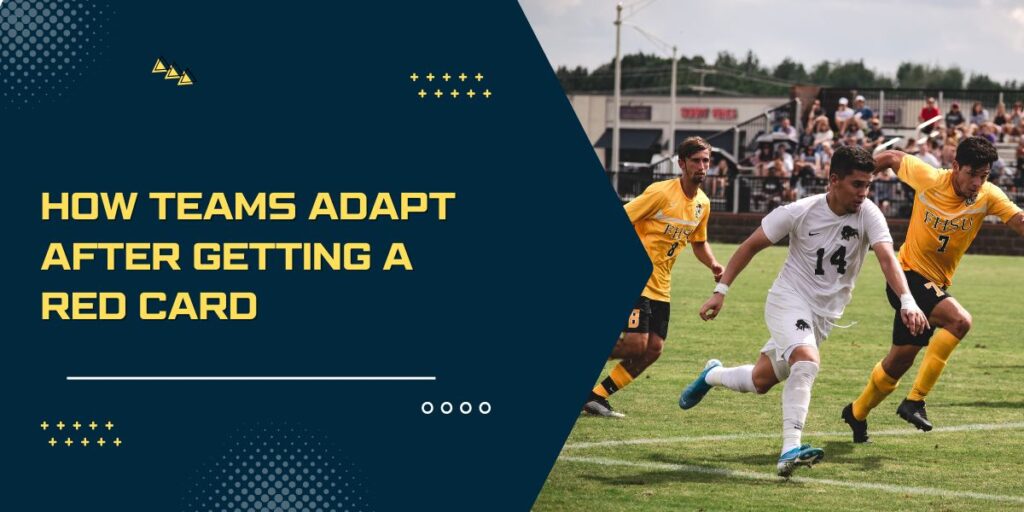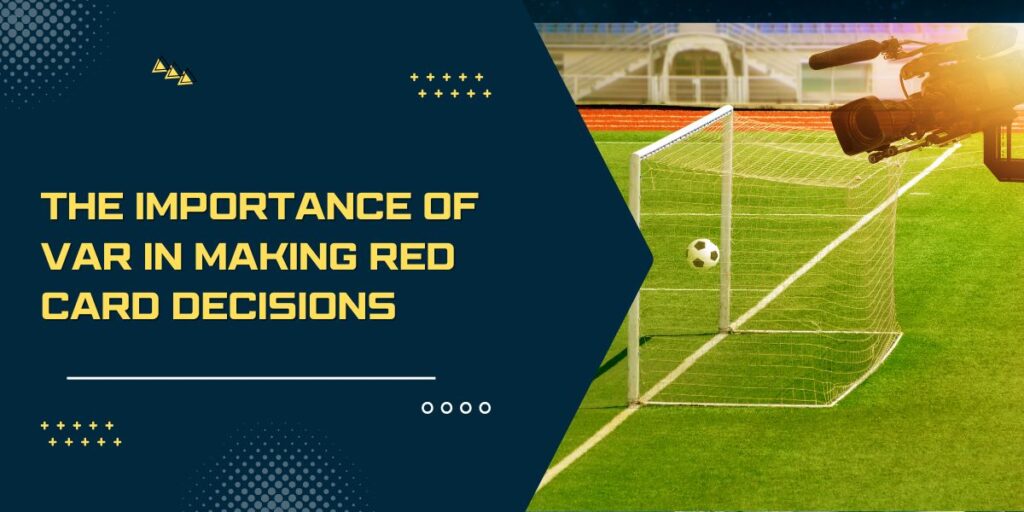What Does a Red Card in Football Mean? Its Meaning and Impact on the Game

Overview
Football (or soccer) is a game played under a specific set of rules that are meant to maintain order and fairness within the sport. One of the most drastic offenses a player can commit in the sport is receiving a red card, which automatically expels a player from the match.
A red card is likely to alter the outcome of the whole match and greatly impact the performance of the team. What is a red card in football? What does it mean? What are its implications? Let’s delve a little deeper.
Circumstances That Result in a Red Card

A player receives a red card under the following circumstances.
1. Serious Foul Play
Serious foul play describes any risky challenge or tackle that might significantly injure another player. It could be a high-footed challenge, a two-footed tackle, or excessive forceful tackling from behind. Such fouls can be extremely injurious and because of that, most referees will not allow them unchecked.
2. Violent Conduct
Violent conduct represents any act of aggression of a player while the match is in progress, and is not part of the game. An example is a player throwing punches, elbowing, kicking, or headbutting an opposing player, or physically assaulting the referee or other authorized persons. Even if no contact has been made, a red card can be issued for any attempt to injure an opposing player.
3. Denial of a Goal-Scoring Opportunity (DOGSO)
When a player intentionally fouls another player to stop them from scoring a blatant goal, the player can be sent off. This is most common when the defender breaks the direct goal scoring chance by a last-man foul or even handling the ball on the goal line. Such behavior has a profound effect on the game and is always given stringent punishment.
4. Using Offensive Or Abusive Language/Gestures
While football is undeniably combative, players are still restrained to certain boundaries. Insulting, threatening, and even attacking an opponent, as well as a referee or even a fan can result in having to flash a red card. This regulation is there so football does not entirely abandon its core values of respect and sportsmanship.
5. Receiving Two Yellow Cards
Automatically receiving a red card is the consequence of obtaining two yellow cards during a match. Lesser transgressions, such as repeated fouls, time wasting, or even dissent, result in issuing yellow cards which in return have the potential of leading to automatic ejection when there are two in a single match.
Consequences of Receiving a Red Card

A red card affects a player and their team in the short term and long term:
Immediate Expulsion – The player has to exit the field instantly and cannot be substituted, which leads to their teammates competing one player down.
Team Disadvantage – Competing with ten players compared to the eleven of the opposition makes it harder to both defend and attempt to score, aiding the other team.
Suspensions While Fines – A player getting a red card will automatically have to miss out on the next game, however, serious offenses can lead to bans of multiple games from governing bodies as well as fines.
Impact of Tournament and League Standings – Being shown a red card results in the player missing out on the next game, which could prove vital for the team around, especially in the league or tournament stage or phase, meaning missing out on crucial points or even elimination from the competition.
Famous Red card Incidents in Football History

Many famous and severe cases of red cards exist throughout the history of football that attracted the attention of the whole world. Typical examples include:
Zinedine Zidane (2006 FIFA World Cup Final) – During the final match against Italy, Zidane was sent off in the extra period for headbutting Marco Materazzi, his last match of football, which greatly reduced the chances of France winning in the penalty shoot.
David Beckham (1998 FIFA World Cup) – Beckham got a red card during an important game against Argentina for kicking out at Diego Simeone. England finished the match with 10 players and lost the game after a penalty shootout.
Luis Suárez (2010 FIFA World Cup) – In the quarterfinals, Suárez blocked a goal with his hands in the match versus Ghana. He got a red card, but Ghana missed the resulting penalty and Uruguay ended up winning the game after a series of penalty shootouts
How Teams Adapt After Getting a Red Card

In most cases, a coach will usually need to make the necessary changes to their strategy after a player gets a red card, as the team is now at a tactical disadvantage. Some of the possible approaches may include:
- Defensive Strategy – The soccer team may decide to protect their goal and therefore adopt a more defensive formation.
- Movement Of Positions – A soccer team may change from a standard style of play (for example, 4-4-2) to a narrower one (for example, 4-4-1) for defensive coverage to be provided.
- Player Changes – Substitute attackers with a defender to make sure the balance of power is maintained and the other team does not take advantage of playing with one more person.
The Importance of VAR in Making Red Card Decisions

Video Assistant Referees( VAR) changes the match for the better by making it easier for a person to referee the match, making more significant decisions at red card incidents. This is accomplished by:
Recording major infractions that should have already been recorded by the referee. More often than not, referees tend to miss the most egregious infractions waiting to be committed during a game. Therefore, the video assistant referee may help get this call correct.
Taking away a red card from a player when the referee adjudicating the match wrongly gives it. In most of the cases, the referee who gets the call gets it wrong and is given a red card by a colleague from his team. The assistant referee at the center has the possiblity to look up and rescind the red card.
Checking to ensure that dangerous aggression or serious fouls have been committed during the game. Aggression and Extreme matters should be discouraged through the employment of VAR.
The employment of VAR has been taken up by various stakeholders and some have argued that decision making is too subjective, nonetheless, the video support system has met some skepticism. VAR’s use is still a topic of dispute in football.
FAQ Regarding Football's Red Cards
1. If a goalkeeper wrongly earns a red card, what’s next?
When a goalkeeper is wrongfully given a red card, then their team needs to replace them with an available player who can act as a keeper. With no other substitutes, a football outfield esports player is needed to become a goalkeeper.
2. Can red cards be canceled?
Teams can contest a red card decision: if the governing authority decides the referee’s assessment was incorrect, the red card may be withdrawn.
3. A player who receives a red card misses at least one game from their schedule.
A player who receives a red card is automatically suspended from the next game, but repeated physical aggression or other serious threats could lead to even stricter penalties?
4. Is it possible for a player to be shown a red card after time has been called?
Yes, red cards can still be shown at the whistle where players fail to comply with certain orders; for instance, engaging in conflicts with the coaches or other players.
5. Will a red card suspension be applicable in the next season of the competition?
Most competitions and leagues give the option to forward a red card ban to the following season if the punishment was not served in full in the previous season.
Conclusion
In football, a player shown a red card is permanently excluded from participating, and this incident can change the flow of a game on its head. The punishment is issued when a player displays bad sportsmanship, engages in physical fighting, or is involved in serious foul play. A red card is integral in enforcing good discipline, but harms the affected team’s performance. Knowing red cards and how to use them helps players, fans, and coaches to have a better understanding of the discipline at hand.



